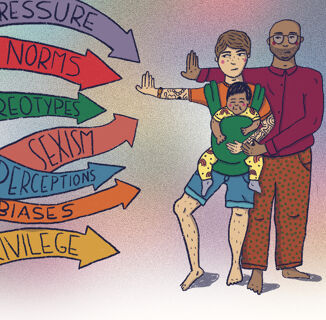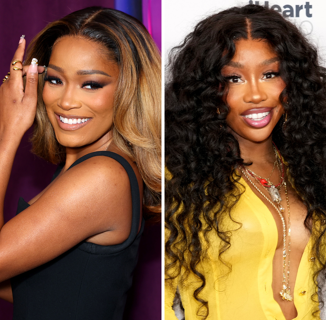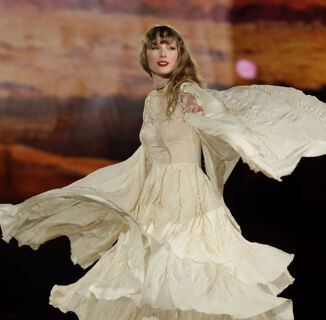Last week at a Fire Brunch with a group of artist friends, we began discussing relationships, good dates, and potential partners. What is a fire brunch, you may ask? It’s an outdoor brunch where you eat by a fire. COVID-19 forced all types of new ways to gather creatively while staying safely distanced outside, so we take turns hosting, providing hot beverages, fruit and pastries. We discuss our art projects and current events and catch up on our lives. One of the friends, who is actively practicing ethical nonmonogamy, asked for advice about an aloof new love interest. They relayed that the woman in question was in their opinion, very fine. We asked for photo receipts and cosigned on the fact that she was indeed fine and very fit. Then they started to provide the details of past meeting flops, stand-up disappointments, and an overall inability to read this beautiful individual. We then surmised that she must be aloof. One of the artists asked quite honestly, what is aloof? We started dissecting what “aloof” looks like and how that differs from being oblivious, shy or antisocial. I immediately thought of a book by a North Carolina writer, James Redfield, an author who shifted the whole paradigm of how we interact with each other. The book later became a movie that you can stream on certain channels.
In James Redfields’ book, The Celestine Prophecy, he breaks down four different types of attention dramas. The drama is being played out by anyone feeling low on power or energy and uses one of the attention dramas to boost that power through the manipulation of these different types. Attention dramas are ways in which we get attention from others whether it be a positive situation or a negative one. The four types are aloof, poor me, interrogator, and intimidation. Let’s discuss the aloof attention drama and the various ways it plays out: These types of dramas are present in many various relationships and create power struggles. After the honeymoon phase of a romantic partnership where you and the person are completely enamored with one another, this dynamic occurs. It happens when we realize a few things:
1. We’re with someone who wants something we may not be able to give.
2. There may be high expectations and someone begins to feel like they can’t measure up.
3. Someone begins to feel trapped.
4. Someone starts to get scared that they aren’t good enough.
5. Someone gets in their head that if they show their real selves, it will be too much.
We started dissecting what “aloof” looks like and how that differs from being oblivious, shy or antisocial.
The aloof person will start to pull back and withdraw. It starts to look too much like right, and that’s frightening. The self-fulfilling prophecy bubbles over and the sabotage of the relationship begins.
The aloof person has mastered the art of withdrawing. They don’t engage with you, ask personal questions, or request follow-up responses to get to know you better. The examples the friend made were that she makes it known she is dating multiple people, and therefore she has a very busy lifestyle. The aloof individual has a special talent of making you feel like you’re lucky to even be kept around, like it’s a big deal they made room in their schedule for you. The aloof ones have learned by training or experience that being vulnerable and showing emotion is not okay.
The fact is, most aloof people have had some type of trauma from their past which continues to shape their present. They’re dealing with an issue that hurt them, and they think that keeping a closed-off heart is the best way to protect it, or to protect you from them! The more the person is chased, the more they pull away. Some think of this as mysterious and endearing, but behind all of the subterfuge, there’s pain, plain and simple.
The way through to the aloof character is first to call out the drama. You can’t keep walking on eggshells or feeling like you’ve overshared. Chances are, an aloof person had an aloof parent. There may be an abandonment issue that isn’t resolved. Let them know exactly how this makes you feel. Name the game in a non-judgmental, non-critical way. I-statements that provide an observation without shaming are the key. Start with “I feel…” and be honest with the person. The aloof person is a hurt person wanting to trust again. If that’s the case, try these things. Build a friendship first. Maintain your independence, clinginess is a major turnoff. Keep things light by avoiding talks about the future. Don’t chase them. Finally, be clear about the potential exchange. They may not be able to give you what you want, in which case it’s okay to walk away and say, “It’s all good love.”♦
Help make sure LGBTQ+ stories are being told...
We can't rely on mainstream media to tell our stories. That's why we don't lock our articles behind a paywall. Will you support our mission with a contribution today?
Cancel anytime · Proudly LGBTQ+ owned and operated
Read More in Culture
The Latest on INTO
Subscribe to get a twice-weekly dose of queer news, updates, and insights from the INTO team.
in Your Inbox















